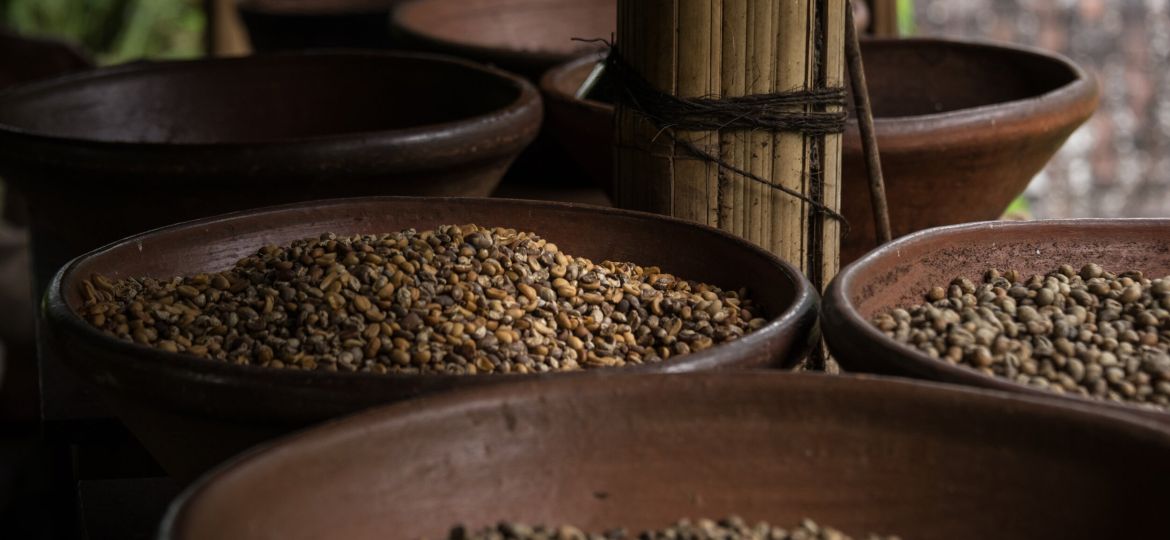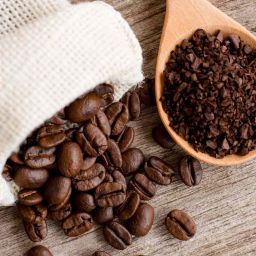
Hawaiian coffee beans are celebrated globally for their distinctive taste and exceptional quality, with Kona coffee standing out as the jewel in the crown. This unique coffee, grown in the rich volcanic soil of Hawaii’s Big Island, boasts a flavor profile that is both rich and smooth, with a complex blend of sweet and fruity notes.
The ideal climatic conditions of Hawaii, combining bright morning sunshine with rainy afternoons and mild nights, create the perfect environment for coffee beans to thrive. Kona coffee, in particular, has gained international acclaim for its superior taste and aroma, making it a coveted choice for coffee aficionados worldwide.
History and Regions of Hawaiian Coffee
The history of Hawaiian coffee traces back to the early 19th century, with the first coffee plants introduced to the Kona region. Over time, the unique microclimate of this area, characterized by rich volcanic soil and an ideal balance of sunlight and rain, proved to be an exemplary setting for coffee cultivation.
The Kona Coffee Belt, a narrow strip along the slopes of the Mauna Loa and Hualālai volcanoes, became synonymous with high-quality coffee production. Beyond Kona, other regions like Ka’u, Puna, Hamakua, and Kauai have also developed reputations for producing exceptional Hawaiian coffee, each with its unique flavor characteristics influenced by the specific terroir.
Types of Hawaiian Coffee
Among the various types of Hawaiian coffee, Kona coffee is the most renowned, prized for its smooth, rich flavor with hints of nuts and chocolate. However, Hawaii offers a diversity of coffee experiences beyond Kona. Ka’u coffee, emerging as a noteworthy contender, is appreciated for its smooth flavor and syrupy mouthfeel, with notes of brown sugar and spice. Puna coffee is known for its intense aroma and flavor, featuring notes of red wine, almond, and rose.
Hamakua coffee, from the cool, rainy regions of Hawaii, is favored for its nutty characteristics. Lastly, Kauai coffee, cultivated on the largest coffee farm in the United States, offers a slightly different profile, known for its bright acidity and crisp flavor. Each region contributes to the rich tapestry of Hawaiian coffee, offering a unique taste experience rooted in the islands’ diverse climatic and geographical conditions.
Top Picks for Hawaiian Coffee Beans
In the quest for the finest Hawaiian coffee beans, several brands and varieties stand out for their exceptional quality and unique flavor profiles. Among them, Big Island Roasters Peaberry Kona, Royal Kona Medium Roast, and Koa Peaberry Dark Roast are noteworthy for coffee enthusiasts seeking the best Hawaiian coffee experience.
Big Island Roasters Peaberry Kona is celebrated for its rare Peaberry coffee beans, which comprise only 3-7% of the total crop. These beans are known for their greater density of flavor, sugars, and lipids, offering a deeply sweet and rich taste with hints of cinnamon, caramel, plum, cacao, and cedar. The medium-light roast enhances its exquisite flavor profile, making it a top choice for those who appreciate the subtleties of Kona coffee.
Royal Kona Medium Roast stands out for its authentic Kona experience, using 100% true Kona beans. This medium roast delivers a superbly clean flavor, marked by its smoothness and a full-bodied taste. It’s attractively priced, considering its high quality, and offers coffee lovers a true taste of Hawaii without leaving their home.
Koa Peaberry Dark Roast is a unique selection for those who prefer their coffee with a bit more intensity. Despite its dark roast, this coffee retains a medium acidity, complemented by sweet to nutty undertones. It’s an excellent base for creamy espresso-based drinks or for enjoying black if you prefer a bolder brew. The Peaberry variant ensures a more complex flavor profile, even in a darker roast.
When exploring these top picks, consider the roast level that best suits your taste preferences. Lighter roasts tend to highlight the coffee’s inherent characteristics, while darker roasts bring out richer, more intense flavors. Brew methods also play a critical role in extracting the best flavors from these beans, with pour-over and French press methods recommended for a more nuanced tasting experience.
Buying Guide for Hawaiian Coffee Beans
Selecting the right Hawaiian coffee beans involves understanding key factors that influence flavor and quality. Roast type is crucial, as it affects the coffee’s acidity, body, and flavor profile. Bean type, particularly Peaberry versus regular beans, also impacts taste, with Peaberry often offering a more concentrated flavor.
Authenticity is another important consideration, especially for Kona coffee, which is frequently counterfeited. Real Kona coffee is labeled as “100% Kona Coffee” and not as a blend. When purchasing, look for this label to ensure you’re getting genuine Kona coffee. Additionally, consider the grade of the beans, with “Extra Fancy” indicating the highest quality, featuring larger beans and a more uniform appearance, which translates to a smoother and more consistent flavor.
Brewing Tips and Methods
To unlock the full potential of Hawaiian coffee beans, precision in brewing is key. Begin with the grind size, tailored to your brewing method: finer grinds for espresso and Aeropress, medium for drip coffee makers, and coarser for French press. Water temperature should hover around 195°F to 205°F, as too hot water can extract undesirable bitterness. Pour-over methods are ideal for highlighting the intricate flavors of Hawaiian coffee, offering clarity and complexity.
The French press, meanwhile, provides a fuller body and richer mouthfeel. Regardless of method, ensure your coffee-to-water ratio is balanced (a general guideline is 1:16 for coffee to water) to avoid over or under-extraction. Stirring the grounds slightly when brewing can also enhance flavor extraction, ensuring a uniform taste.
FAQs
What’s the difference between Kona coffee and blends? Kona coffee is grown exclusively in the Kona District of Hawaii and is known for its high quality and unique taste profile. Blends, however, may contain only a small percentage of Kona coffee mixed with beans from other regions, often resulting in a less distinct flavor.
How should I store coffee beans? To preserve freshness, store coffee beans in an airtight container away from direct sunlight and moisture. Avoid refrigeration, as it can introduce moisture and odors. A cool, dark pantry is ideal.
What does “extra fancy” grade mean? “Extra fancy” is the highest grade given to Hawaiian coffee, including Kona, based on bean size, shape, color, and defect count. It indicates the beans are of the highest quality, offering superior flavor and aroma.
Summary and Final Thoughts
This exploration of Hawaiian coffee beans underscores the islands’ unique contribution to the coffee world. From the rich volcanic soil of Kona to the diverse climates across Hawaii, each region produces beans with distinctive flavors worth savoring. Through careful selection, proper brewing techniques, and an appreciation for quality, coffee enthusiasts can enjoy the full spectrum of what Hawaiian coffee has to offer.
Whether you’re drawn to the rare Peaberry Kona or the smooth notes of a medium roast, diving into the world of Hawaiian coffee opens up a realm of taste experiences. Embrace the journey and discover your perfect cup.









